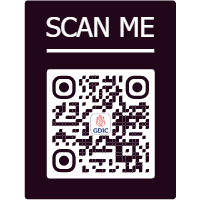
Discover the key differences between the double marker test, done in the first trimester, and the triple marker test, performed in the second trimester, during pregnancy.
Pregnancy is a period of grace. During this period, there are some tests through which you can check the health of the baby. Double marker and triple marker are two extremely common tests. Ganesh Diagnostic and Imaging Centre is a good imaging centre in Delhi. They provide these crucial pregnancy tests. It is useful to know the difference between the two tests. It informs you about your healthcare option.
What are Pregnancy Marker Tests?
Pregnancy marker tests are screening tests. They inform us about risk for some of the baby's chromosomal defects. They have Down syndrome (Trisomy 21). They screen for Edwards syndrome (Trisomy 18) and Patau syndrome (Trisomy 13) too. These tests test for levels of some things in the mother's blood. They combine these levels with other information. These are the mother's age and gestational age. The outcome is a risk estimate for certain conditions but not a diagnosis. To receive safe and accurate pregnancy tests near me, visit a reputable center.
The Double Marker Test: A Preliminary Screening
The double marker test is completed during the first trimester. This is typically at 9-13 weeks of gestation. Two specific markers in the blood of the mother are examined. The markers are:
- Free Beta-hCG (human chorionic gonadotropin): It is a placental hormone.
- PAPP-A (Pregnancy-associated plasma protein A): It is a secreted placental protein.
These markers' levels are quantified. These are then compared with reference values for gestational age published. Along with maternal age and the nuchal translucency (NT) scan result, a risk score is calculated. The NT scan is a sonographic measurement of the fluid-filled area at the back of the baby's neck. Ganesh Diagnostic and Imaging Centre has proper NT scans, which is one of the best labs near me.
What is scanning in the Double Marker Test?
Double marker testing is actually being conducted to predict the risk of:
- Down syndrome (Trisomy 21)
- Edwards syndrome (Trisomy 18)
It gives a preliminary idea whether more diagnostic testing will be needed or not. Screening early can guide parents and enable them to prepare and make informed choices. For the best pregnancy tests, please seek advice from a physician and select an accepted facility.
The Triple Marker Test: Second Trimester Screen
Triple marker is done during the second trimester. That's typically 15 to 20 weeks pregnant. It's a three-part test in the mother's blood:
- AFP (Alpha-fetoprotein): A protein from the baby's liver.
- hCG (human chorionic gonadotropin): Another measurement or type other than double marker.
- Unconjugated Estriol (uE3): A placental and the baby's liver hormone.
As in the case of double markers, they are quantitated. They are referred to as the expected levels. The risk score depends on the mother's age. Ganesh Diagnostic and Imaging Centre provides a complete pregnancy test.
Pregnancy tests that are done at Ganesh Diagnostic-
Here are other pregnancy tests that are done at Ganesh Diagnostic and imaging centre such as -
- Microalbuminuria (BOOK NOW)
- Urine For Pregnancy (Book Now)
- Inhibin A, Pregnancy (Book Now)
- GDIC Pregnacare Package-2 (Book Now)
- Fetal Well-Being Ultrasound (Book Now)
- Ultrasound Biophysical Profile (Book Now)
- Biophysical Manning (Book Now)
- Urine Albumin (BOOK NOW)
What is Tested for During Triple Marker Test?
Triple marker test identifies the risk for:
- Down syndrome (Trisomy 21)
- Edwards syndrome (Trisomy 18)
- Open neural tube defects (ONTD): These are birth defects of the brain and spinal cord.
Which Test is Best for You?
Double and triple marker tests are utilized based on an array of various different factors. They are drawn from the stage at which you are when you go for the test. Your doctor will advise you on which test is ideal for your unique case and medical status. Early detection by the double marker gives an earlier risk estimate. The triple marker gives information on neural tube defects. Ganesh Diagnostic and Imaging Centre, your best imaging centre in Delhi, can possibly give you all the information and guidance on the same.
What happens after a positive screening test?
It is reassuring to know that if your screening test is positive, it does not necessarily imply that your baby has a neural tube defect or chromosomal abnormality.
A positive screening test only indicates that you are at higher risk. You usually have a diagnostic test afterward. A diagnostic test will give you an absolute diagnosis. CVS or amniocentesis are some of them. You will be informed about them by your physician. He/she will explain the procedures to be performed next in detail.
Selecting Ganesh Diagnostic and Imaging Centre
For the best pregnancy testing centers, Ganesh Diagnostic and Imaging Centre is always the best. They are reliable and accurate. They possess better technology and highly skilled staff. They possess a peaceful and serene atmosphere for pregnant women. For the nearest medical laboratory with the best pregnancy tests, visit Ganesh Diagnostic and Imaging Centre. They provide the best diagnosis.
Conclusion
Gaining knowledge regarding the double marker test and triple marker test makes you an educated participant in your prenatal care. Both the tests identify the risk of a condition. These good screening tests are provided by Ganesh Diagnostic and Imaging Centre, the most trustable diagnostic center. Discuss your doctor and make the right selection for you. Stress-free pregnancy and accurate results are assured when you have a good center.
People May Ask
Q. What is the cost of a double marker test in Delhi NCR?
The cost of the double marker test in Delhi NCR ranges between 1300 INR to 1500 INR and also this is based on centre to centre.
Q. How to download my pregnancy test reports online?
You can download the reports online or click here to download your reports online.
Q. What is the cost of the Triple Marker test in Delhi NCR?
The cost of the triple marker test in Delhi NCR ranges between 2300 INR to 2500 INR and also this is based on cost affecting factors such as centre location, technology etc.













